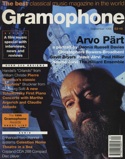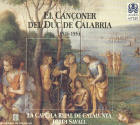Texte paru dans: / Appeared in: |
|
|
Reviewer: Tess Knighton This is vintage Hesperion XX . The singing and playing are superb (as always), and the repertory melodious and dancey by turn – of the Cançoner del Duc de Calabria is right up their alley. Amazingly , this is the first commercial recording (that I know of) dedicated to this songbook from the Valencian court of the Duke of Calabria - surprising because of the accessibility and quality of the music. Several items from the book have become well known (notably the ubiquitous Riu, riu, chiu, which, thankfully, is not included here), but up till now it has been difficult to gain an appreciation of the collection as a whole. Published in Venice in 1556, it records an earlier repertory, dating from the first decade of the sixteenth century through the 1530s and, possibly, I540s. The Valencian court was one of the major cultural centres of the Iberian peninsula at this period, and the court culture was heavily influenced by the latest humanistic trends from Italy.
In musical terms, the repertory of the Cançoner reflects this mix of imported and indigenous elements; most of the songs conform to the fixed-form villancico of the later fifteenth century, but within the essential refrain-and-verse structure much of the writing reveals a more madrigalian idiom. Indeed, popular-style refrains are often succeeded by madrigalian verses, and Hespèrion XX reinforce this through the scoring adopted; popular songs and refrains attract full-blown 'orchestrations' (the tutti ensemble of viols, winds, plucked instruments and percussion so characteristic of the Hespèrion ensemble), or at least varied combinations of instruments, while the more imitative sections blend voices, viols and harp or vihuela. On this recording, the harp takes precedence over the vihuela, which may not quite reflect the status of the latter instrument at the Valencian court in the first half of the sixteenth century, but gives plenty of exposure to the brilliantly imaginative playing of Andrew Lawrence-King on the harp.
The songs are well chosen and nicely varied in poetic content and interpretation; it is particularly good to have the relatively few Catalan items from the songbook, which when sung by Jordi Savall's excellent team of native singers, are lent a distinctly dark flavour - whether in the winsome Soleta so jo aci, the lively irony of Que farem del pobre Joan! or the captivating lyricism of Vella, de vos som amoros - thanks to the covered vowel sounds of the language. Other irresistible items include Morales's Si n'os hubiera mirado - attributed to Guerrero and probably the most beautiful song (in both text and music) of the whole collection - and the anonymous Ay luna que reluzes, treated here in a manner very similar to Hespèrion's renditions of Catalan folk- songs.
In short, this
is an outstanding disc which brings to light another unjustly neglected corner
of the repertory in performances that reveal Hespèrion XX at their very best: a
tribute to the vision and skill of Savall and his team.
A must for any collection.
|
|
|
|
|
|
Cliquez l'un ou l'autre
bouton pour découvrir bien d'autres critiques de CD |
|




